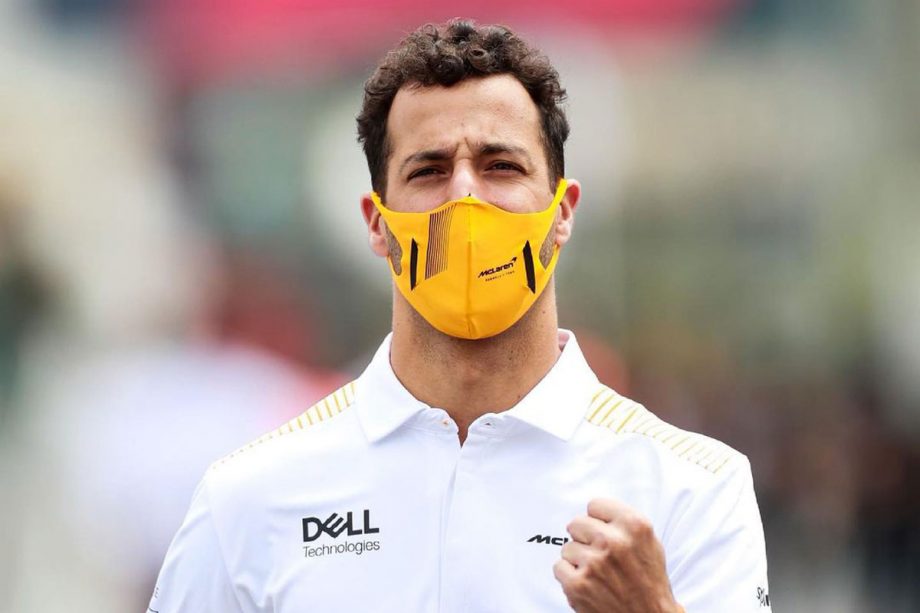Daniel Ricciardo Risks The Wrath Of Ocean Conservationists With Latest Fitness Drill

Daniel Ricciardo is famous for being one of the world’s best F1 drivers, sure. But did you know he’s also something of a fitness pioneer? The 31-year-old has made headlines over the years improvising reaction time workouts in all sorts of situés.
From “ball grabbing” workouts in the park to mountain biking in California, Ricciardo does a whole lot more than just go to the gym. Not to mention the time he drained a half-court monster in an impressive NBA training debut (or his epic Happy Gilmore moment).
Enter: his latest efforts at “staying sharp.” These efforts involve him lightly squatting, with his back to his training partner, before jumping around and catching a cone thrown at him, without knowing exactly which direction it will be headed.
The exercise goes somewhat awry when a cone almost escapes him and starts heading towards the ocean – the exercise being done on a pier.
Fortunately, Ricciardo catches the cone before it gets blown over.
Ricciardo posted the above video to his Instagram story in the early hours of the morning (AEST time) on June the 24th.
He then posted (again, to his Instagram story) the following video of a neck workout, using cable pulleys attached to his forehead.
Reaction training has numerous benefits outside of just the sporting world. Not only does it help in football, boxing, tennis and of course, F1, but as a general skill, it’s certainly one you’d want to improve.
So what actually is reaction training and how do you improve it? Freeletics explains our reaction times are “determined and controlled by our nervous systems.”
When we receive a stimulus to react to – in Daniel’s case, being told where to put his hands (or having to figure it out on the fly) – the sensor responsible (eyes, ears etc) sends a signal to the brain. The brain analyses the signal via “the efferent motoric neurons.”
It then gets passed on to the muscles, which execute the instruction. “All of this happens almost instantly,” Freeletics explains.
As we reported last year in May, there are myriad ways you can improve your reaction times, most of which involve some form of exercise.
They can include running on uneven terrain to help train your brain to avoid various obstacles and to stay more alert; or running through exercise drills slowly to help your body learn a routine, so when you’re asked to perform it at a quicker speed, your brain will know what to do.
However, reaction times are different to reflexes. Putting your arms out to protect you when you fall, or catching a glass before it topples over are reflexes.
The difference? Freeletics claims reflexes are your body’s way of protecting you from harm, and because this usually requires an even faster reaction than a reaction; signals actually skip your brain and instead immediately go through the spinal cord.
So, if you want to improve your reflexes, no amount of forcing yourself to trip over is going to help.
Still, reaction time workouts are still a great way to keep your fitness routine fresh, and your brain sharp.
Read Next
Subscribe to the DMARGE newsletter
Follow DMARGE on Instagram
Follow DMARGE on Facebook
The post Daniel Ricciardo Risks The Wrath Of Ocean Conservationists With Latest Fitness Drill appeared first on DMARGE.









